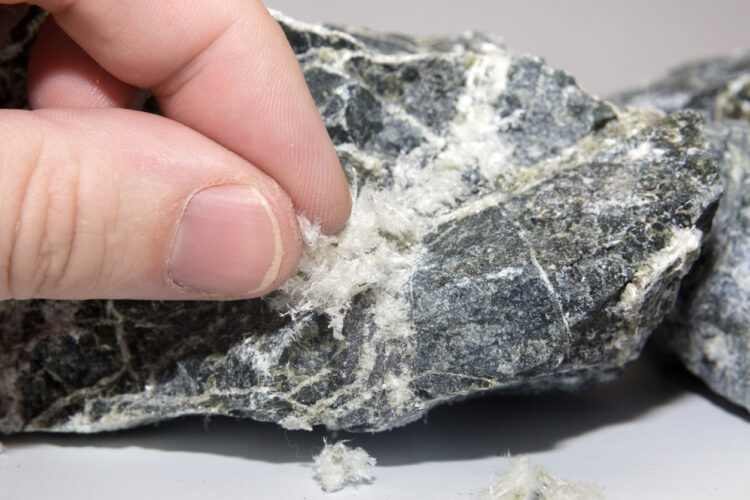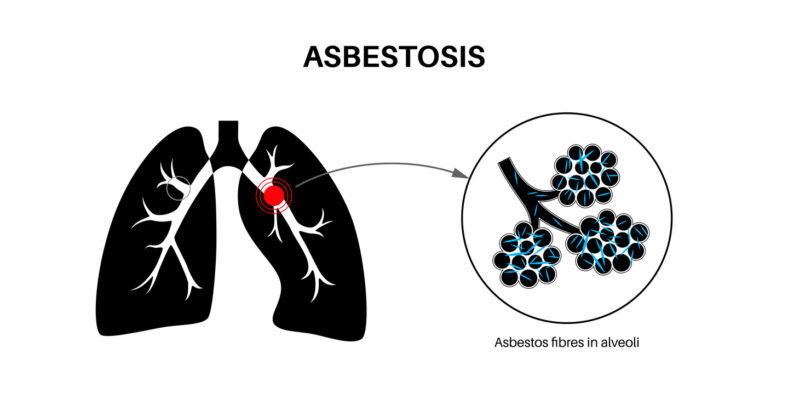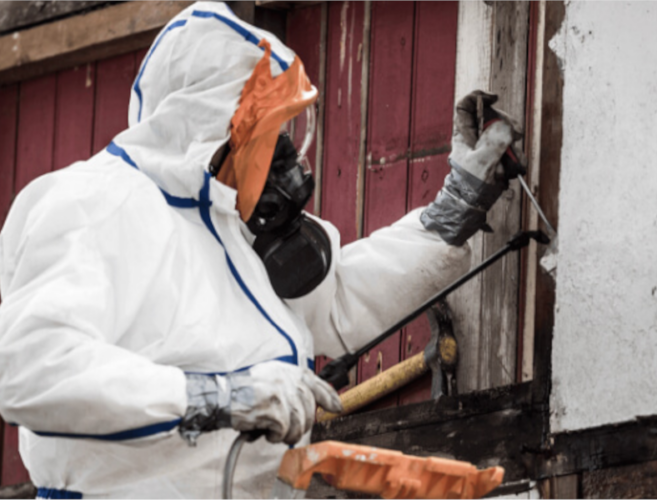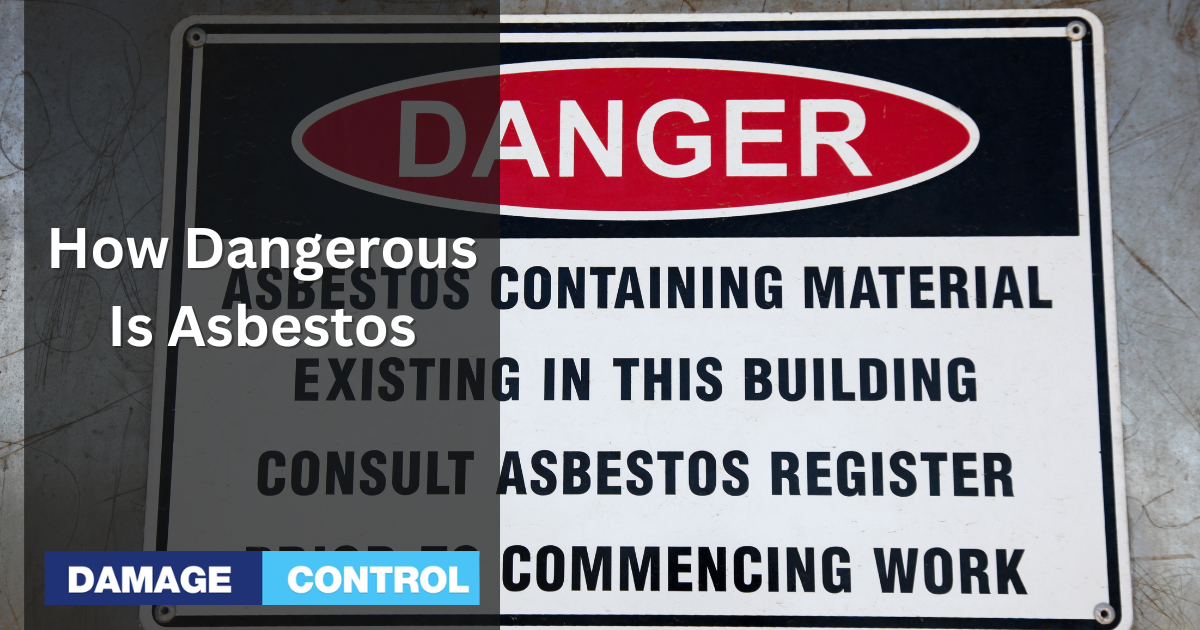Asbestos. Sounds like an old-time villain, right? It's a natural mineral that used to be the cool kid on the block in construction and manufacturing. Why? Its superpower was resisting heat. But here's the catch – it's a nasty piece of work linked to real health baddies like lung cancer, mesothelioma, and asbestosis.
This article? It's your personal safety manual! We're talking serious talk about how harmful asbestos can be. Plus, we're tossing you the 411 on staying safe from this sneaky stuff.
Even though many countries have said “adios” to asbestos, it's still lurking in a bunch of older buildings. Think homes, schools, workplaces. Mess with it, and its tiny fibers fly around, ready to be breathed in. And, folks, that's when the health trouble starts.
Picture this: about 100,000 people around the world don't wake up each year because of asbestos. Makes it one of the baddest bad guys out there.
In this article, we're going deep. Health risks? Check. Who's most at risk? Check. How to keep yourself and your loved ones safe? Double-check. And we'll check out the rule book on asbestos and how folks are trying to dial down exposure to this mean machine.
Whether you're a homeowner, construction worker, or just a health-savvy human, this article's your treasure chest of info. It's your key to staying safe around this big bad wolf. Buckle up, folks, it's gonna be a wild ride!
What's Asbestos?

Imagine a mineral with tiny, needle-like fibers. They're so heat-resistant, that folks use them in construction, shipbuilding, and more. That, my friend, is asbestos. But hold up, it's not a superhero. It's toxic, causing serious health nasties like lung cancer, mesothelioma, and asbestosis.
The Asbestos Line-up
Asbestos comes in six types, but three are the most popular kids in commercial products. We've got chrysotile (the white asbestos), amosite (the brown guy), and crocidolite (blue asbestos). Chrysotile's the big cheese, accounting for 95% of all asbestos used in the U.S.
Amosite was the go-to for insulation, while crocidolite was
Properties of Asbestos
Asbestos has some unique traits, making it a hit in construction and other industries. Heat-resistant, fire-resistant, doesn't carry electricity, and tough against chemical corrosion. But here's the flip side – when you breathe it in, it's downright dangerous.
Asbestos fibers, when airborne, are easy to inhale and get trapped in the lungs. Over time, these little troublemakers cause scarring, inflammation, and serious health headaches.
Those in asbestos-heavy industries like construction, shipbuilding, and car manufacturing? They've got to watch out. Asbestos exposure isn't playing around!
Health Risks of Asbestos

Let's talk asbestos. This natural mineral was the bee's knees in building materials, insulation, and other stuff until the '80s. But here's the rub – getting up close and personal with it can lead to health nightmares like asbestosis, lung cancer, and mesothelioma.
Asbestosis
Picture a chronic lung disease caused by inhaling asbestos fibers. They stick in your lungs, causing scarring and making breathing tough. Symptoms? Shortness of breath, coughing, chest pain. The real kicker is that there's no cure, and lung damage is a one-way street.
Lung Cancer
Asbestos exposure can boost your chances of lung cancer. If you're a smoker exposed to asbestos, your risk is on the high side. Coughing, chest pain, trouble breathing – these could be lung cancer signs. Treatment might involve surgery, chemo, and radiation therapy.
Mesothelioma
Mesothelioma is a rare, aggressive cancer that hits the lung lining, chest, abdomen, and other organs. Asbestos exposure is nearly always the culprit. Symptoms can include chest pain, shortness of breath, and weight loss. Sadly, it's often caught in the late stages, making treatment a tough game.
Asbestos can also trigger non-cancerous lung and pleural disorders like pleural plaques, pleural thickening, and benign pleural effusions. Think you've had an asbestos date? Chat with your doctor and get regular checkups to keep your lung health in check.
Remember, folks, prevention is your best buddy with asbestos diseases. Are you renovating an older home or building? Call in the asbestos-removal pros. Were you working in an asbestos-exposure industry? Suit up with protective gear and stick to safety rules to cut down your exposure risk.
Exposure to Asbestos
Asbestos. It's natural and used extensively in construction, shipbuilding, and more for its heat resistance and toughness. But hang around it too long, and you could face health nightmares like lung cancer, asbestosis, and mesothelioma. Let's break down the different types of asbestos exposure.
Occupational Exposure
Occupational exposure is when you meet asbestos at work. Construction, shipbuilding, and manufacturing workers – they're at higher risk. Breathing in those tiny fibers can damage your lungs and cause serious health trouble.
Sure, bosses are supposed to protect workers from asbestos exposure. They should provide respirators and follow safety rules to keep exposure down. But even with those precautions, some workers still might meet asbestos.
Environmental Exposure
Now, let's talk about environmental exposure. This is when you run into asbestos in the air, water, or soil. It can happen where asbestos naturally hangs out or has been released into the environment because of humans.
You might find environmental asbestos in homes and buildings with asbestos-containing insulation, roofing, and flooring. Natural disasters like Katrina or earthquakes can stir up these materials, causing exposure.
So, how do you minimize asbestos exposure? If you think your home or workplace has asbestos, call a pro to remove it. Avoid disturbing asbestos materials and always stick to safety rules to keep exposure low.
Regulations and Guidelines
Asbestos is one bad hombre. That's why we have rules and guidelines from different bigwigs to protect us from asbestos exposure.
The Environmental Protection Agency (EPA) sets national emission standards for the nasty stuff in our air, including asbestos. Their playbook, Section 112 of the Clean Air Act, tells them how to protect and jazz up our air quality and the stratospheric ozone layer. They also developed the Asbestos Hazard Emergency Response Act (AHERA) to protect students and school workers from asbestos.
Then you've got the Occupational Safety and Health Administration (OSHA). They've set limits for asbestos in the workplace, capping it at 0.1 fiber per cubic centimeter of air for an eight-hour shift and a spike limit of 1.0 asbestos fibers per cubic centimeter over 30 minutes. They tell bosses to make sure no one gets more exposure than that. Plus, they must train workers and give them protective gear to meet asbestos.
The National Institute for Occupational Safety and Health (NIOSH) advises workers who could run into asbestos. They discuss respiratory protection, personal protective equipment, and safe work habits. They also say to check on workers' health who've met asbestos.
But let's not forget – we must look out for ourselves too. Leave it be if you think your home or workplace is packing asbestos. Get a licensed pro to check it out and safely remove the asbestos.
So, these rules and guidelines keep us safe from asbestos. Let's ensure we follow them and take extra precautions to dodge asbestos-related illnesses.
Asbestos Removal and Disposal

Dealing with asbestos ain't a DIY project, folks. It's dangerous stuff, and we have to leave it to the pros. If you think your place might have asbestos, take action pronto.
Start by getting a licensed pro to come over and check things out. They'll grab some samples and send them to the lab for testing. If the tests come back positive – bingo, you've got asbestos.
During the removal, they'll seal off the area to keep those pesky asbestos fibers from taking a tour of your building. With their fancy gear and equipment, they'll safely remove the asbestos. Then, it gets sealed up tight and labeled for disposal.
Now, throwing out asbestos isn't like tossing out your trash. There are state and local rules to follow. Tossing it in your regular trash or recycling bin is a no-no. Instead, it's off to a designated hazardous waste disposal facility.
Here's what you must remember about getting rid of asbestos:
- Call your local waste management facility. Ask them where to dispose of asbestos.
- Double bag the asbestos stuff and slap on a label that screams “hazardous waste”.
- Haul it to the disposal facility in a sealed, leak-proof container.
- Stay safe! Follow all the rules when handling and transporting asbestos.
Remember, folks – leave the asbestos removal and disposal to the experts. Trying to do it yourself can lead to big health problems. Safety first!
Conclusion
There you have it, folks, the lowdown on how dangerous asbestos is. This isn't a substance to mess around with. Whether you're a homeowner, a worker in construction or just someone who values their health, awareness and knowledge are your first defense.
That's why we encourage you to keep learning more about asbestos and its risks. For instance, you may have asbestos hiding right under your feet. In our ‘Identifying asbestos tiles: Hidden dangers' article, we identify asbestos-laden tiles as a common household culprit.
Don't stop there! Some forms of asbestos are less friable or less likely to release harmful fibers than others. That doesn't make them safe, though. To understand this better, head to our ‘Non-friable Asbestos: An Informal Guide'. You might also want to check out our guide to Asbestos Insulation – What It Looks Like'.
If you suspect you might have asbestos in your home or workplace, it's critical to get it tested. Not sure how to go about it? No worries, we've got you covered with our ‘Asbestos Testing: A Practical Guide'. And if you're in the Orlando, FL area, you're in luck! We're Orlando's asbestos testing experts.
Remember, it's always better to be safe than sorry. Get educated, get tested, and stay healthy!

